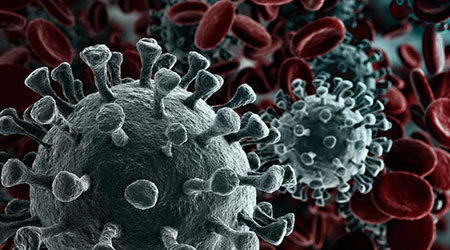Being able to eradicate the SARS-CoV-2 virus at the flip of a switch is about as attractive a concept as they come. UVGI (ultraviolet germicidal irradiation) technology, chiefly UV-C, has a proven record at killing or deactivating a variety of pathogens. And the technologies which can emit these wavelengths have been used in facilities for decades, according to an article from Building Operating Management on the FacilitiesNet website.
However, facility managers must still be judicious in selecting and applying the UVGI technology in their facility for a variety of factors, including achieving maximum efficacy while reducing harm to facility occupants, and the facility itself.
There is a range of wavelengths which can kill or deactivate pathogens. The more potent effect is found in the UV-C range, but all UV and even some blue light has a degree of germicidal effect. Understanding that is one of the first steps of being an educated consumer of germicidal technologies.
To begin with "germicidal" just means it kills microscopic pathogens. Whether it kills the tiny thing you're interested in killing depends. For example, radiation in the 405 nm range creates a creepy blue glow and also deactivates bacteria, spores, and microbes. It's used primarily in unoccupied healthcare settings, to combat hospital acquired infections. But it has no impact on viruses.
Read the full FacilitiesNet article.

 How Efficiency Checklists Help Hospitals Save Energy, Water and Money
How Efficiency Checklists Help Hospitals Save Energy, Water and Money Designing with Heart: Seen Health Center Blends Cultural Warmth and Clinical Care
Designing with Heart: Seen Health Center Blends Cultural Warmth and Clinical Care Rutgers Health and University Hospital Breaks Ground on Campus Expansion
Rutgers Health and University Hospital Breaks Ground on Campus Expansion What to Consider When Modernizing Healthcare Facilities
What to Consider When Modernizing Healthcare Facilities Corewell Health Beaumont Troy Hospital to Build New Tower
Corewell Health Beaumont Troy Hospital to Build New Tower